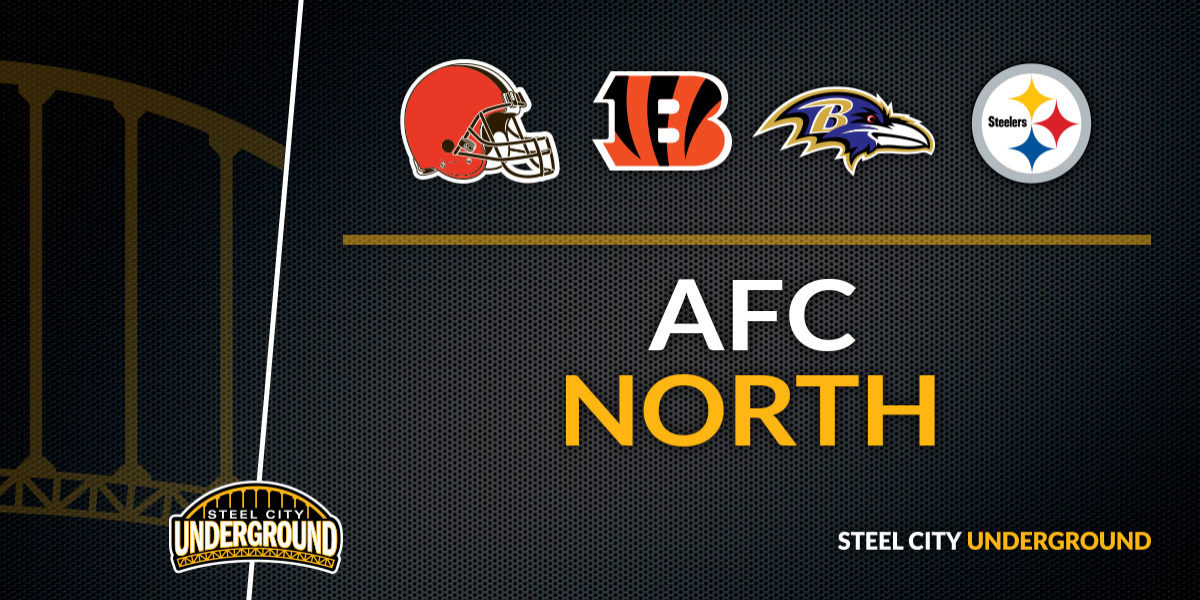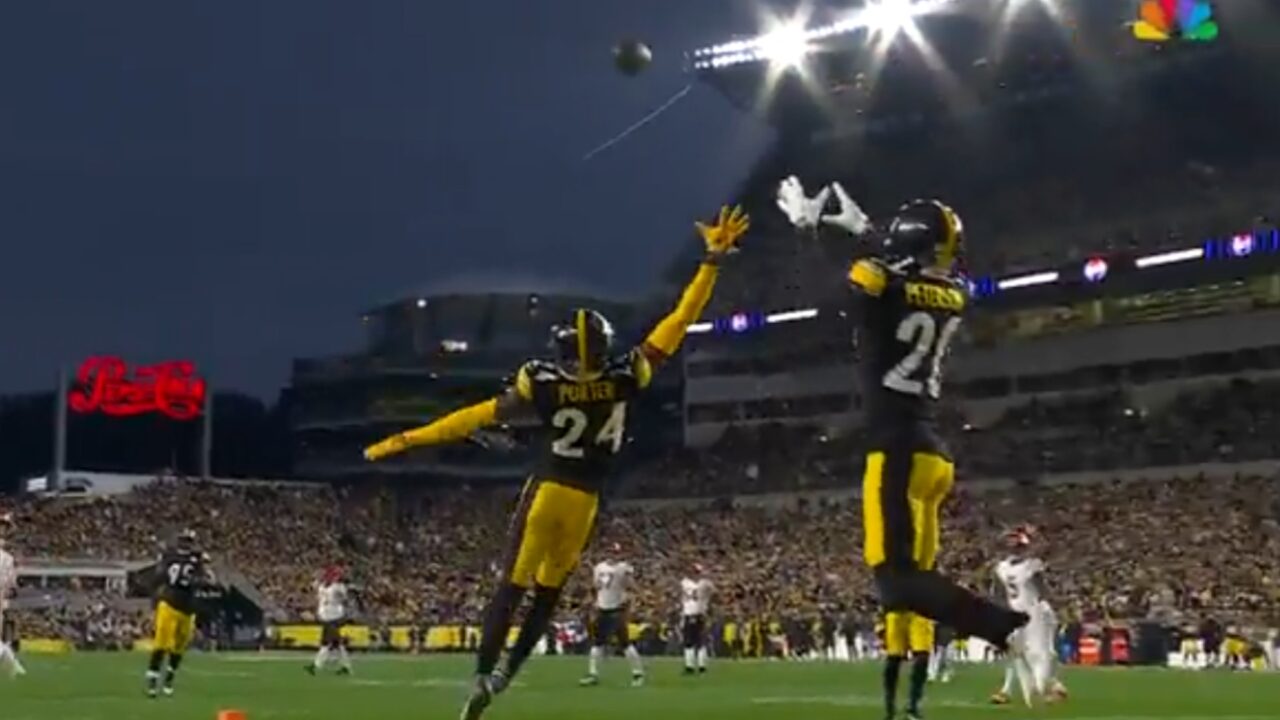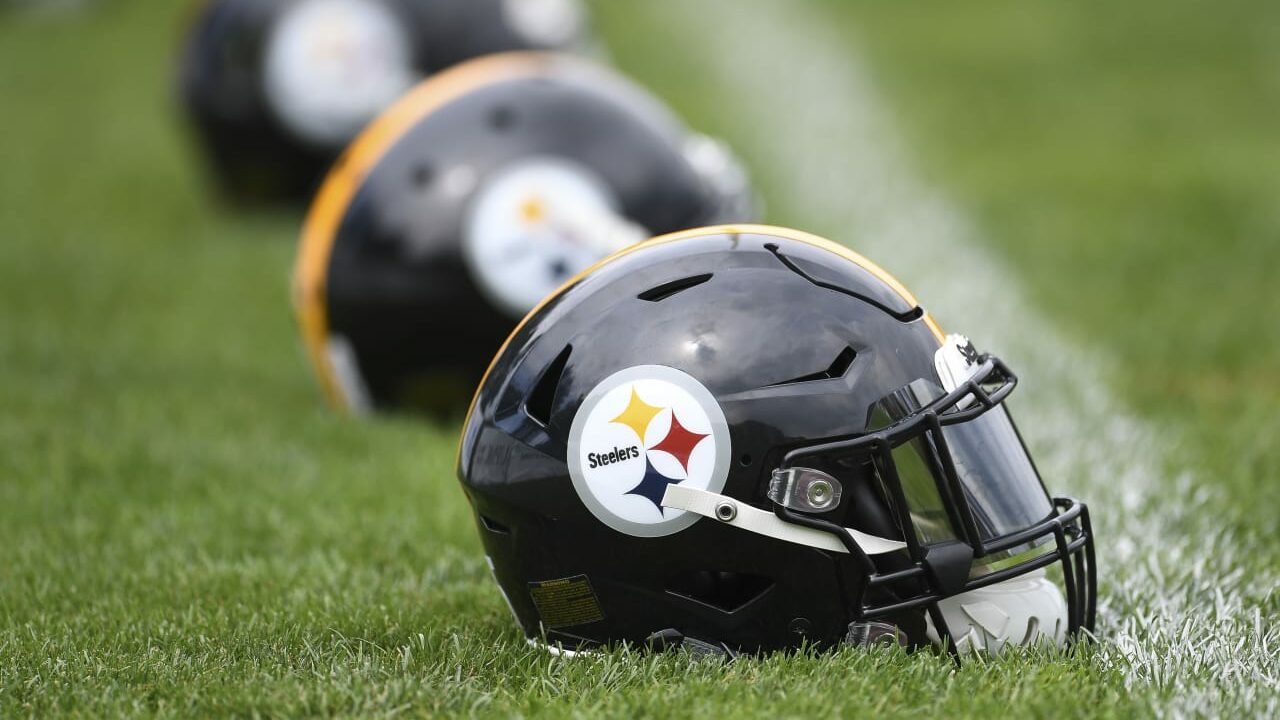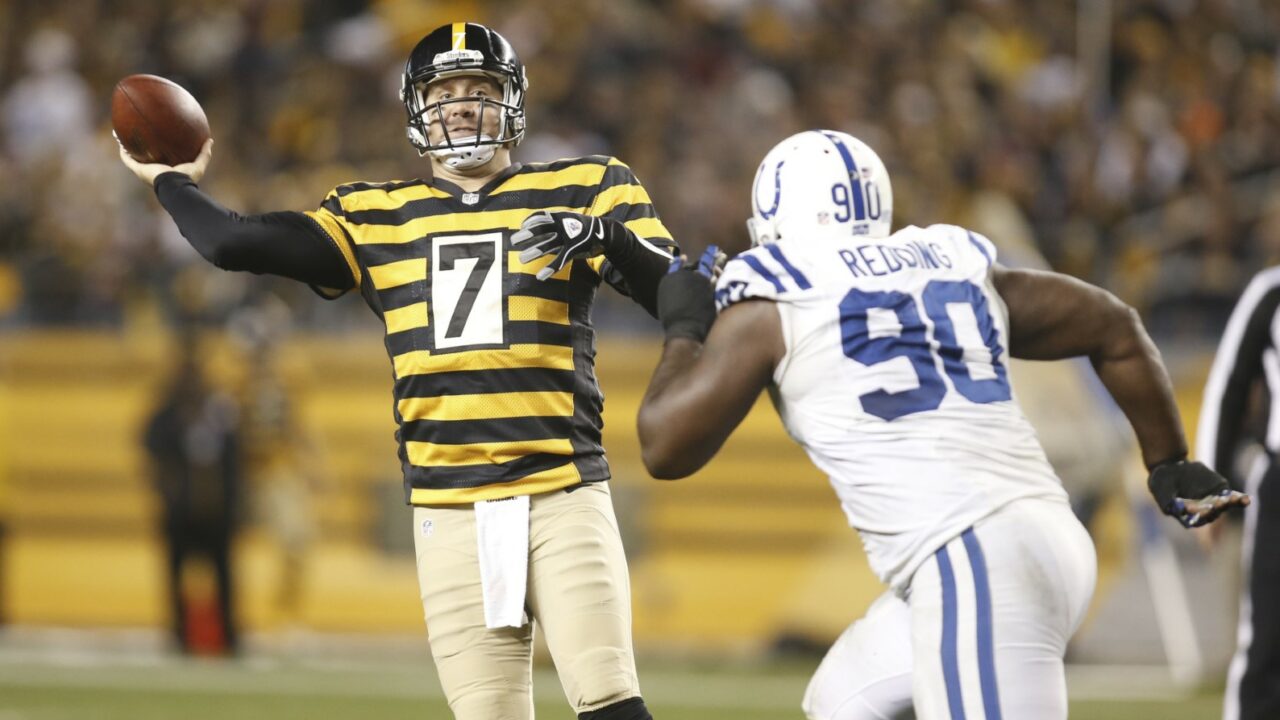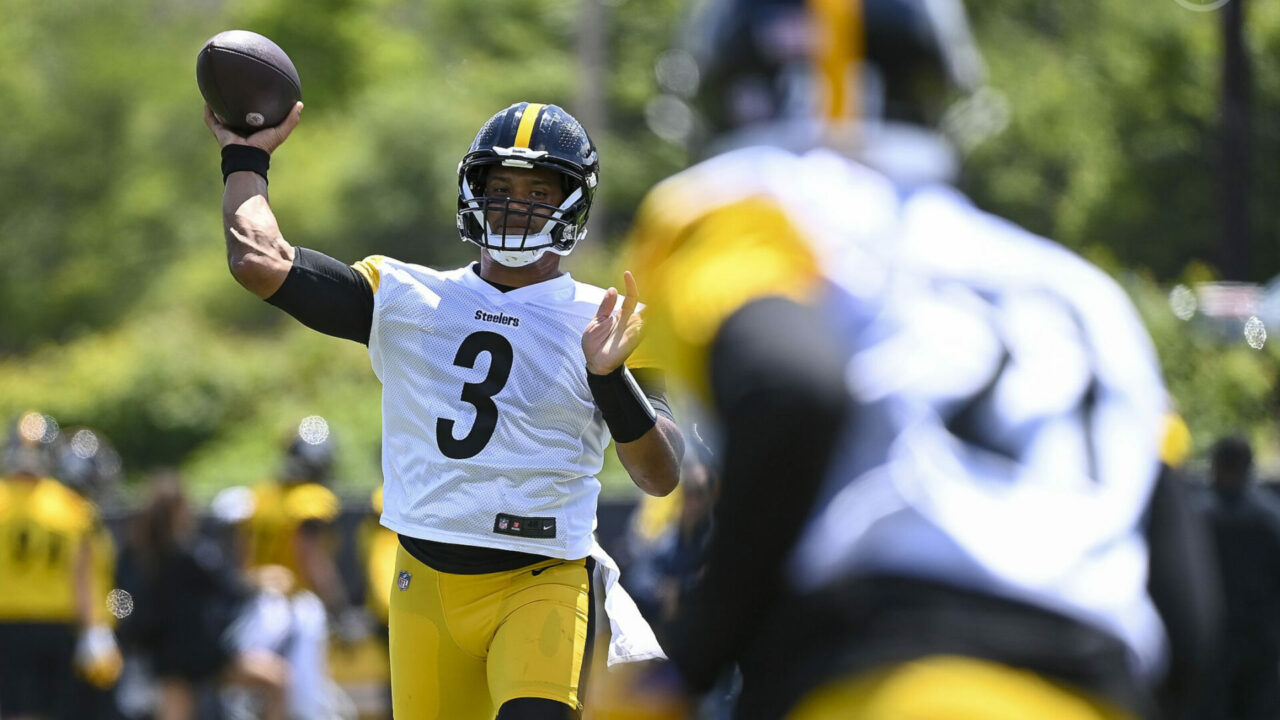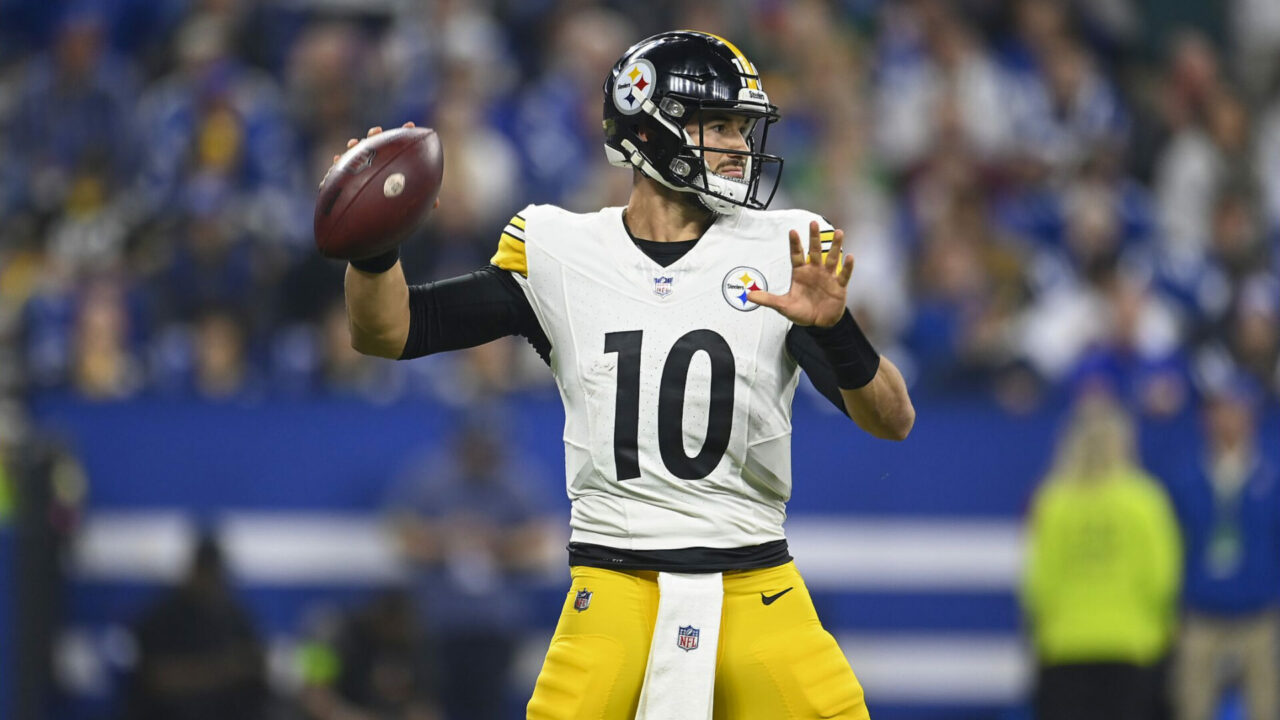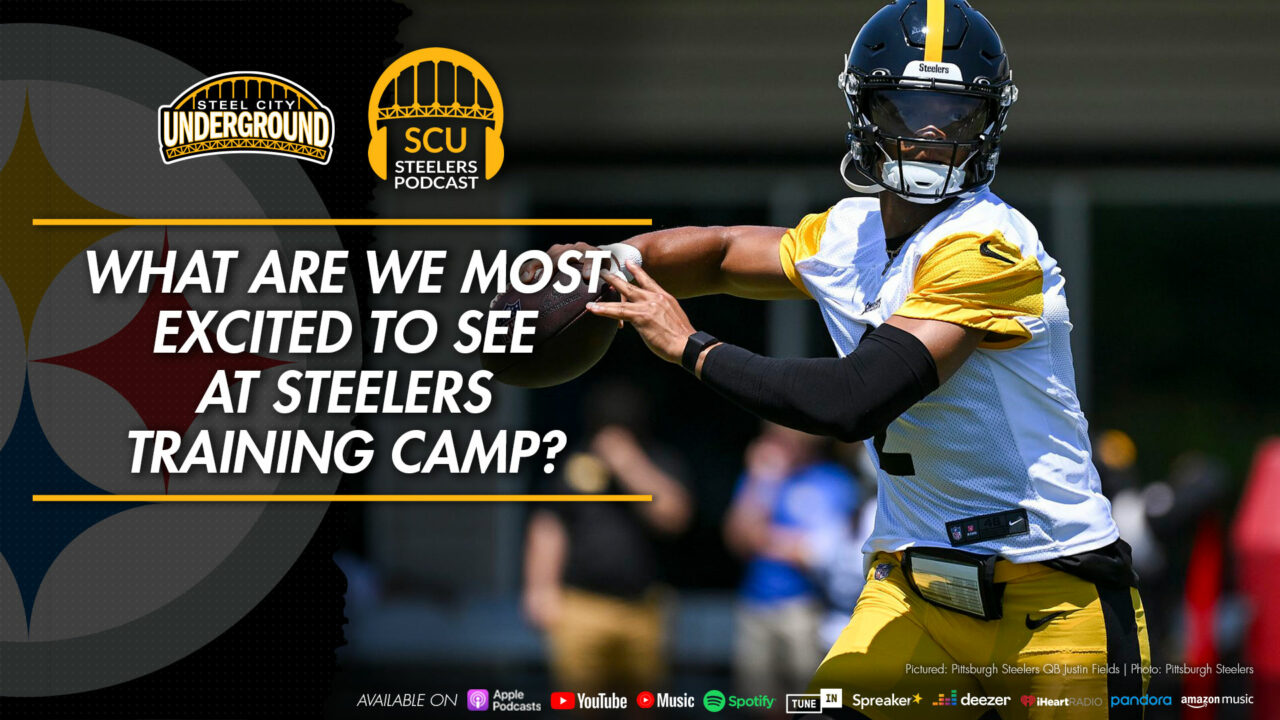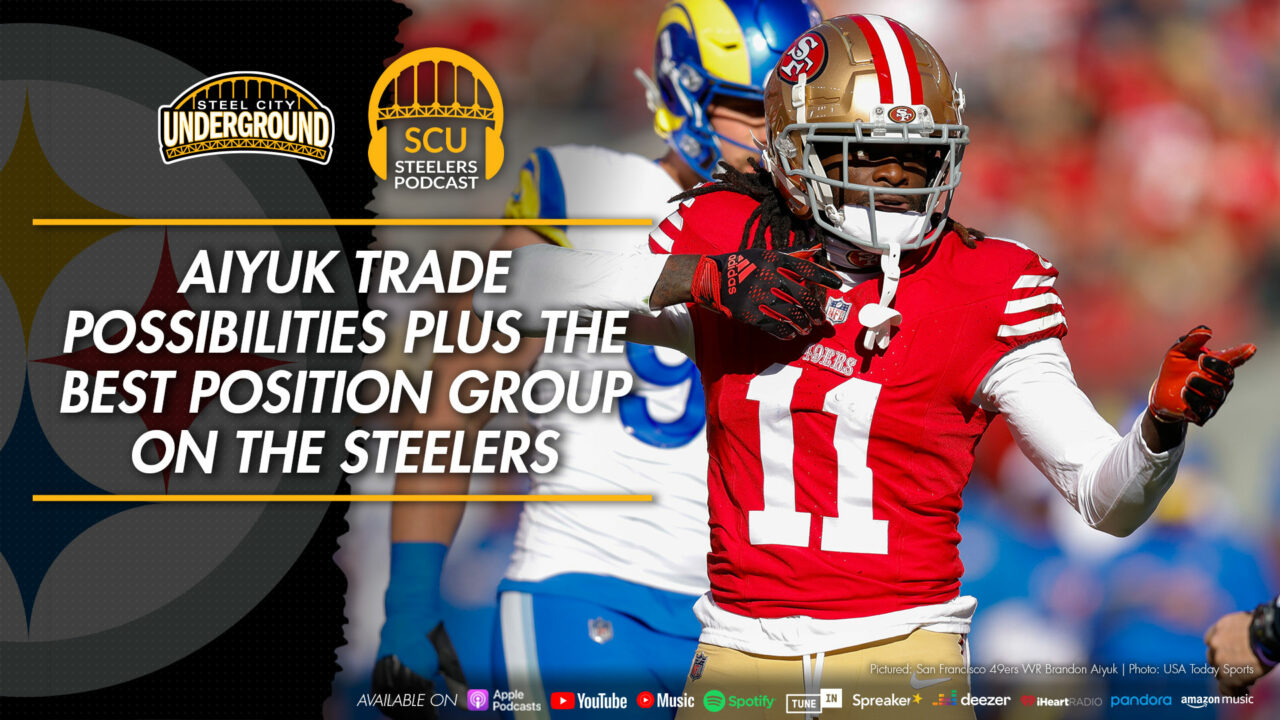2018 AFC North Positional Rankings
Recently, I decided to rate each positional group for every team in the AFC North. For these ratings, I gave a number from 1-10 – where 1 represents the worst in the league and 10 represents the best. A score of 5 means the team is right on average at that particular positional group.
Here is what I came up with:
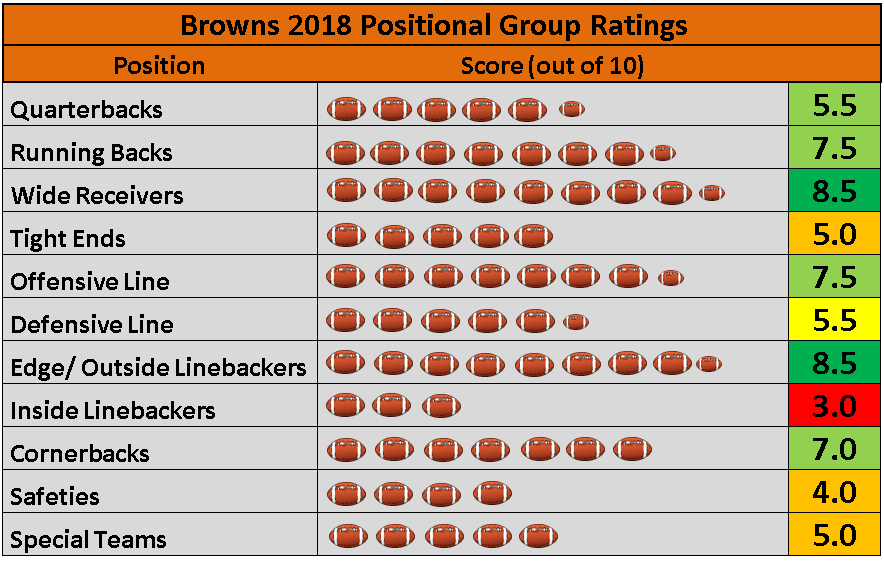
Cleveland Browns:
Strengths: The Browns are one of the youngest teams in the league and could very well be on the rise in the near future. However, they aren’t quite there yet. Their best positional groups are wide receivers and their edge rushers. The Browns have a capable number one in Josh Gordon, and added one of the best slots in the league this offseason in Jarvis Landry. Outside of that, former first-round pick Corey Coleman has been a disappointment so far. Still, he and troubled rookie Antonio Callaway have pretty good upside if they can get it together.
Cleveland also possesses one of the best groups of edge players in the league – headlined, of course, by generational talent Myles Garrett. Outside of him, Emanuel Ogbah, Carl Nassib, and Nate Orchard all appear to be solid players early in their careers. Cleveland could have made this group the best in the league if they had chosen Bradley Chubb with the 4th overall pick this year.
Weaknesses: According to their record, the Browns were the worst team over the past two seasons. The linebacker core is currently a mess. Neither Jamie Collins or Christian Kirksey played well last year. Joe Schobert is alright and they added Genard Avery in the fifth round, but they are in need of an upper tier linebacker.
The Browns are also pretty weak at safety right now. Jabrill Peppers played out of position and struggled last year. Derrick Kindred is solid and they added Damarious Randall, but are still in need of an upgrade.
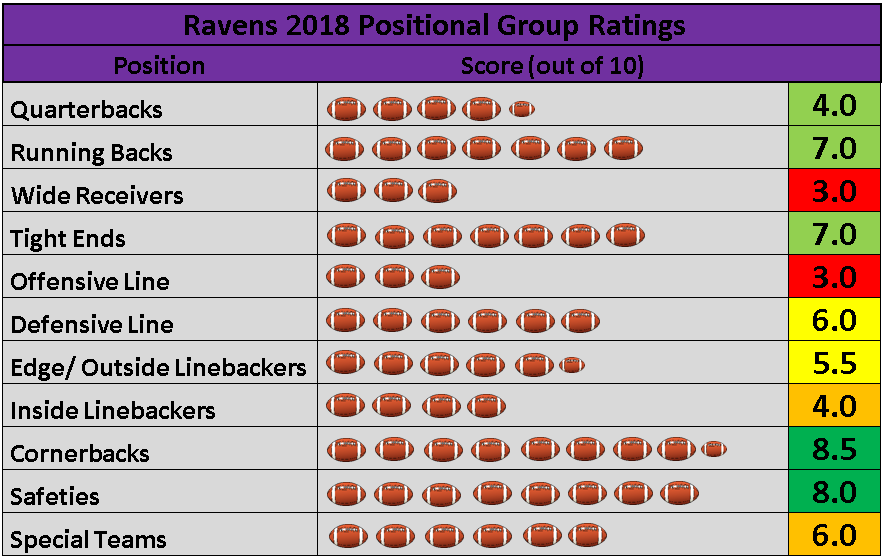
Baltimore Ravens:
Strengths: The Ravens don’t have a lot of positive to note about their team right now, but their secondary is one of them. Baltimore possesses a boatload of capable cornerbacks with Jimmy Smith, Marlon Humphrey, Maurice Canady, Brandon Carr, and Tavon Young. Though they don’t have elite talent up front, they are one of the deepest in the league at this position.
The Ravens also have some very solid safeties in Eric Weddle and Tony Jefferson – one of the best pairings in the league. Behind them is solid depth with Anthony Levine and rookie DeShon Elliott.
Weaknesses: Baltimore is towards the bottom of the league when it comes to their receiving core and offensive line. Breshad Perriman was a bust. They brought in Michael Crabtree, Jeremy Maclin, and Willie Snead, though none of them are above average players at this point in their careers.
Outside of All-Pro guard Marshal Yanda, the Ravens offensive line is very weak. Quarterback – the most important position on the team – is another area that isn’t great. Joe Flacco is one of the worst starting signal callers in the league, though there is hope with rookie Lamar Jackson.
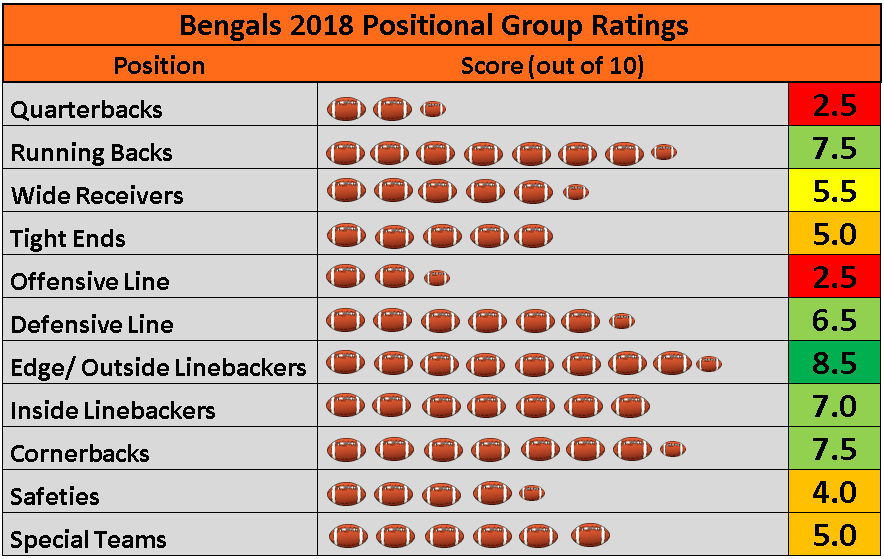
Cincinnati Bengals:
Strengths: The Bengals have one of the deepest groups of edge players in the league with Carlos Dunlap, Michael Johnson, Carl Lawson, Jordan Willis, and rookie Sam Hubbard. Their rookies stepped up in a big way last season.
Though they don’t have many great positional groups, Cincinnati is strong at linebacker, cornerback, and running back with players like Vontaze Burfict, William Jackson, and Joe Mixon.
Weaknesses: The Bengals are in a bad way at quarterback with just Andy Dalton and Matt Barkley to show for. Like Flacco, Dalton is a player that the team should be looking to replace and upgrade, but unlike Baltimore, there is no depth behind him.
Cincinnati also has one of the worst offensive lines in the NFL. Though they invested a first round pick in center Billy Price, their line as a whole is a mess.
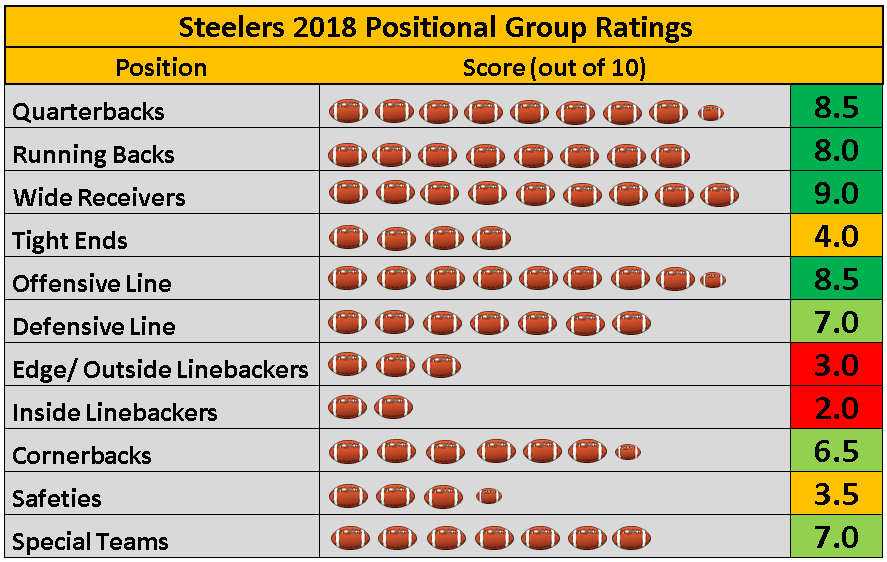
Pittsburgh Steelers:
Strengths: What separates the Steelers from the other teams in the AFC North is the quality of their strength in some of their positional groups. The Steelers have the best quarterbacks in their division. Though Ben isn’t quite the same quarterback he once was, he’s still one the better signal callers in the league. Behind him, Landry Jones, Joshua Dobbs, and Mason Rudolph make up quality depth.
Pittsburgh is also strong at running back and wide receiver. We know Antonio Brown and Le’Veon Bell are among the best in the game. Outside of them, they still have a rock-solid number two receiver in JuJu Smith-Schuster. James Conner, James Washington, and Jaylen Samuels are also young players with upside.
In addition, the Steelers have one of the best offensive lines collectively in the league with 3 Pro Bowlers and first-team All-Pro guard, David DeCastro.
Weaknesses: The Steelers aren’t without their share of weaknesses. On the defensive side of the ball, the Pittsburgh needs help at the middle linebacker and edge positions. Vince Williams is best suited as a quality backup, and Bud Dupree isn’t the player they thought he would be. The Steelers are also lacking depth on the edge with just Anthony Chickillo as the only backup with game experience.
Pittsburgh attempted to improve the safety position this offseason by drafting Terrell Edmunds and Marcus Allen. They also brought in Morgan Burnett, so this position could rise quickly. However, until proven otherwise, the safety position isn’t great. The Steelers could also use some additional help at tight end.
Conclusion:
Though other teams in the AFC North have some positional groups that are better than Pittsburgh’s, what separates the Steelers from the rest is the superior quarterback play and the strength of their offensive positional groups.
The Steelers have 4 elite positional groups on their team, whereas the Browns, Ravens, and Bengals combine for just 5 elite positional groups – none of which are at quarterback.
Simply observing these charts doesn’t do the Steelers justice, as some of these categories should be weighted more heavily (like quarterback, for instance). The Steelers are still the best team in the AFC North, and I don’t see that changing for at least the next couple of years.
